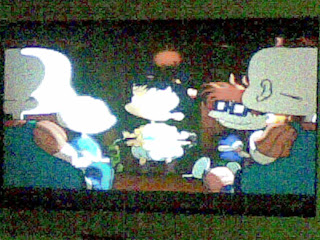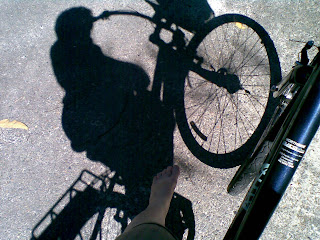The media is awash with stories about electricity prices and how it is that solar panels such as ours are contributing to it.
There is a projected cost of $42 billion in investment of network infrastructure such as poles and wires which accounts for approximately 80%-90% of the increased prices that are being experienced in NSW (62% for QLD). This investment is required due to growing population and increased demand for power.
A national renewable energy target of 20% will account for an approximate 4% increase of bills (equivalent to about $0.8 per week). Putting a price on pollution also will contribute to some increases. However, the infrastructure costs are the major causes of price increases.
Investment in renewable energy is one of the solutions for a cleaner future. The cost of the feed in tariff is reflected in just a few percent of the 10% which is the retail component of our electricity increases. Production of PV electricity is expected to reach the same price as retail electricity in the next 5-10 years which is why governments around the world are investing in schemes similar to ours. As PV system prices continue to decrease, they will become even more affordable for people on low incomes to purchase.
Australians have one of the world's highest standards of living and our carbon outputs reflect this, so the incentive we have to reduce our power bills will require some adaptation on our part.
The true cost of photovoltaics
Electricity Prices - the facts
Thursday, November 4, 2010
Monday, November 1, 2010
Solar Powered Clothes Dryer
There's an old joke about an ad in the paper offering a solar powered clothes dryer for $5. Amazed at the price, people sent off their five dollars and eagerly anticipated their new dryer. What they received was a length of clothes line - the original clothes dryer (plagiarised from Mooselt Musings)
Apartment buildings all over the world have been battling for the simple priviledge of being able to hang out their clothes (see articles below). From the 1st Sept 2010, the Strata Schemes Management Regulation 2010 in NSW features a new by-law for the hanging of washing from owners' balconies. Owners of existing Strata schemes (ie us!) must pass a resolution to adopt this by-law. Judge announces new climate-friendly strata initiatives Dept Fair Trading, 1 Sept 2010
Most apartments have outdoor drying areas. Going up and down the steps can be a little inconvenient - but really no more so than living in a two storey house - and if you're looking to increase your daily activity it really adds to your 10,000 daily steps!
Movement is an Opportunity Not an Inconvenience

90. Hanging Clothes to Dry.—To some it might seem that the laundry work is practically done when clothes are ready to be hung on the line; but the next step has some very important features, the oversight of which might make necessary the rewashing of articles.
One of the chief virtues of proper drying of clothes is the effect that sun and air have on them. When clothes are hung on the line quite wet, almost dripping in fact, the combined action of sun and air is one of the best bleaches known. It is because of this that white clothes should be hung, when possible, out-of-doors, and that colored clothes should be hung in the shade or indoors.
91. To save time in the sorting of articles for ironing, hang all garments of a kind together. Then, to have the clothes dry in the best possible condition, keep in mind the following general directions:
Be sure that the clothes-line and pins are perfectly clean.
Shake things out well and turn outer garments, if they have not already been turned, wrong side out.
Hang large pieces, such as sheets and table-cloths, on a straight thread of the material, one-fourth or one-half of each over the line, and fasten with four or five clothes-pins. Sheets may be doubled crosswise, so that the upper and lower hems meet, and pinned to the line by the hems, to minimize the danger of hems being torn by the wind.
Fold flat pieces as they are taken off the line, as then they will be easier to iron.
92. Authorities differ as to the proper method of hanging dresses and blouses on the clothes-line. If there is plenty of room, garments may be hung lengthwise; that is, held to the line by clothes-pins at the shoulder, the waist line, and the hem. A garment will dry more quickly, however, if hung by the hem, and, if the position on the line is changed at least once, there will not be much danger of stretching. Circular skirts, or flared effects, will sag if this is done, but most wash frocks are cut on comparatively straight lines so this need not be considered.
Very sheer dresses may be placed over a hanger that has first been wound and padded with a strip of clean old muslin or Turkish toweling. The hanger may be hung over the line and held fast by a clothes-pin. If possible, always dry delicate materials in the shade, but if no shade is available, hang the garment inside where there is a free circulation of air.
inspiration for this blog courtesy of www.beforeourtime.com; text from Vintage Sewing
washing
News and Information
Change in wind as balconies air dirty laundry SMH, 17 July 2010
Judge announces new climate-friendly strata initiatives Dept Fair Trading, 1 Sept 2010
"To Fight Global Warming Some Hang a Clothesline" NYTimes, April 2, 2007
"Hanging out for a clean fight" The Age, May 10 2008
David Suzuki
David Suzuki's explanation of exponentional growth
Tuesday, April 13, 2010
It's all about making a choice
Eating out today for lunch, we were at a fish and chip place. Not the best spot for someone who's allergic to wheat, because everything was battered. But, making sure I ate the salad first and removing the batter proved how simple a choice can be. But making that choice when there's something I really love is a different story.
Saturday, April 3, 2010
fixing things
The washing machine's broken. We're lucky that my husband is good at fixing things, he pulls all the pieces apart and checks how each piece looks. I usually can't face that stuff, it seems way over my head and I know nothing about the pieces. But watching my husband makes me realise that for the most part, things are just logical although you still need to learn what pieces do. As it turns out, on this occassion, the electrical board doesn't work and the cost of replacing it begins to approximate the replacement cost of the machine itself, without knowing whether something else will crash soon after. But the lesson on fixing things is that it's not that hard. Patience is needed for problem solving and investigation, and there will always be stuff to learn - but it's a skill well worth developing.
Sunday, March 21, 2010
the convenience addiction 1.
The way I go about my life is driven solely by expediency: what's the most amount of stuff I can get through in the least amount of time? - Because I have more stuff to do next. This causes me permanent anxiety. Instead of convenience, allowing a little more time will help me get organised, enjoy my current activity and breathe!
Tuesday, March 16, 2010
Minutae
The detail I hoped to never grow up enough to experience. But this is my reality if I am seriously persuing a sustainable lifestyle. Knowing the plumbing layout provides insight into greywater possibilities; deciding whether to install gas for hot water, I have to think about pipes; to maintain my bicycle I have to learn to make fine adjustments with an allen key; and to make progress with my community garden, it will help me to learn about strata rules. Changing the world, relies on changing our lifestyle, which means changing my attitude about tiny things which I have always hated. But, it's the most important thing I can do.
Permaculture
There's a lot to learn before I can get the community garden happening, it's very daunting. I was refered to a permaculture group Permaculture North to assist with developing the garden. Attending the meeting was really interesting, lots of people interested in the same thing and a particularly interesting guest speaker, Nicholas who has started: http://permaculture.tv/ website. Lots to learn and I love the principles. But, I just want to get started!!
http://permaculture.org.au/what-is-permaculture/
http://permaculture.org.au/what-is-permaculture/
Wednesday, March 10, 2010
Screen time
I have been babysitting my nieces and nephews and am astounded at the amount of screen time they engage in: almost every minute is on computer or tv. This means that they spend most of their time passively and reflexively responding to a program rather than playing and creating. It certainly makes me appreciate my own childhood in treehouses and outside, and so I resolve to have my own time screen minimal.
Tuesday, March 9, 2010
Barefoot cycling
I feel like a child, what pleasure! The best I have done recently is change my bike from a road bike (because it didn't fit me properly and was unsafe), to a ladies comfort bike. It's cheaper, doesn't need special shoes or special clothes, so it has become a practical mode of transport. The barefoot part is just an added pleasure when I'm in quiet areas.
Monday, March 8, 2010
Stains
I've always been quite rough and tumble and so have never worried about how dirty I get, no matter what I'm doing. On top of that I am no domestic goddess, i have had no time or patience for housekeeping. The practice of looking after things so they last means I need to consume less, so doing laundry is no longer a mundane practice. Stain removal means that clothes and carpet last longer, and napkins and handkerchiefs can replace paper versions. The most valuable prinicple is that every stain has a solvent - for example detergent 'cuts through grease' as the ads tell us. So far I have learnt that facial soap and cold water, rubbed in with a toothbrush removes protein stains and is the first step. Meat, gravy, milk, blood - in fact most food related stains respond to this. Then, I put it into the wash with a commercial powder, because detergent removes the next level of stains which are oil and fat based. There is much more to learn, and the books by Shannon Lush and Jennifer Fleming are fantastic, because most of their cleaning solutions are simple and environmentally friendly.
Sunday, March 7, 2010
Community gardens
I'm advocating to have a small unobtrusive herb plot in a common area. A small request which one would achieve in their own yard within days. So it's frustrating to submit plans and jump through hoops. Then I've realised: as much as I don't like it, politics is integral to making change. If I want to live differently without dropping out of city life, I'd best start working through it.
Tuesday, March 2, 2010
Bathroom Renovation
The bathroom is dated but functional so I've been shopping around for renovation ideas. The imaginary dream bathroom has a vanity and shower water collection pan which flushes used water through the toilet. There's a feature wall which pumps the water up to a waterfall and water runs onto a series of ledges with ever finer purifying stones, finishing on a ground level catchment of plants. The dream goes on. The reality is that my greenest option is to leave the bathroom as is (just replace the vanity which is the eyesore), which eliminates my need to consume new resources; and to remember that it's how I use the bathroom that makes tje difference.
Subscribe to:
Posts (Atom)



-757666.jpg)


